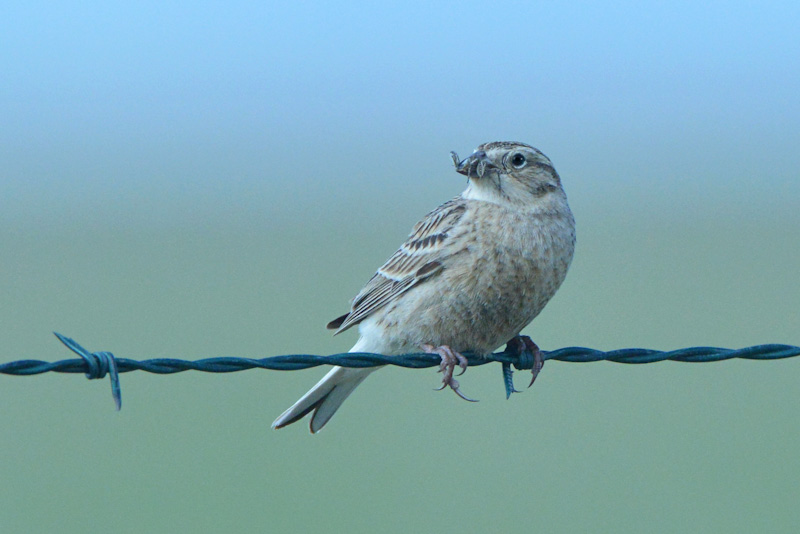

Photo and Commentary ©2023 by Robert Howson
Tuesday, November 14, 2023
If you were informed the two pictures shown here are of the same species, taken during the same time of year, you might rightly conclude that one is a male and the other a female; and this would be a correct conclusion. The more brightly colored male gives the species its name, the Chestnut-collared Longspur, while the female’s more subdued coloration might facilitate her ability to hide from predators while nesting. The name Longspur is a reference to the long hind toe or hallux, a characteristic not uncommon to a number of birds nesting in the grasslands of North America.
To many observers of our world’s ecosystems, it seems its inhabitants are in a constant struggle or tug-of-war. What benefits one species is detrimental to another. This can be illustrated with the life of the longspur. Traditionally it nested in areas grazed by bison or disturbed by prairie fires. Even today it tends to avoid nesting in areas where grazing is prohibited, preferring areas like airstrips which are mowed to grassland and left undisturbed. There are other organisms which flourish in the exact opposite conditions leaving the ecologist in a bind, trying to determine which species is most deserving of special consideration. And this unresolvable predicament is sometimes experienced by those who truly seek to follow the Lord and His ways.
For even the most optimistic, the condition of the earth seems in jeopardy. The really good news is that there are some things that can be answered with an absolute YES! Isaiah places these two realities in contrast: “Lift up your eyes to the heavens, look at the earth beneath; the heavens will vanish like smoke, the earth will wear out like a garment and its inhabitants die like flies. But my salvation will last forever, my righteousness will never fail.” (Isaiah 51:6 NIV)
